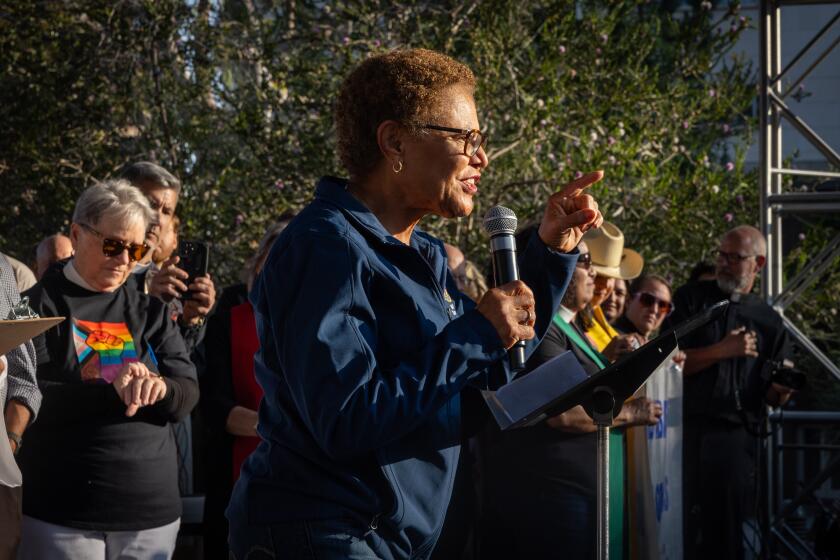Tollways Should Act as One
- Share via
The San Joaquin Hills toll road always has been the troubled relative among Orange County’s quasi-public toll roads. Now the family is about to take remedial action, and while there may be some risks, there really is no good alternative.
From the beginning, the San Joaquin was a dubious proposition, stirring fierce opposition in Laguna Beach before it cut a swath through pristine coastal hills. While serving a new suburban area like Aliso Viejo and providing an alternate route north for an older one like Laguna Niguel, it never had enough high-growth areas along its route to provide sufficient paying customers. And the price in perceived environmental damage was high even after the initial outcry. When a national convention of environmental writers visited Laguna Canyon a few years ago, panelists gave them a grim assessment of the damage to the land and community psyche caused by the road’s construction.
Recently the toll road’s directors authorized a merger with the more successful agency that oversees the other two Orange County tollways, the Eastern and Foothill corridors. The merger vote is scheduled next month, and there appears to be a sound basis for allowing this merger to go forward.
The Foothill tollway has been so successful that it recently announced a $12.8-million project to add a new northbound lane to clear bottlenecks. Northbound ridership is said to be about 4,600 cars in peak hours, and the area between Bake and Santa Margarita parkways is especially crowded.
Although there are serious questions about plans to extend the Foothill corridor south through sensitive environmental lands near San Onofre, the justification for northern parts of the roads was much easier to see. Without the Foothill, Coto de Caza, Portola Hills, Lake Forest and parts of Mission Viejo would have been less viable as residential communities serving employment centers to the north. The road was a necessity, not merely an alternative to other northbound routes, the way the San Joaquin Hills corridor was. The San Joaquin route didn’t give northbound commuters along the coast a compelling alternative once improvements at the El Toro Y on the San Diego Freeway eased that bottleneck. The Foothill, by contrast, was a logical artery to serve new communities in a growing part of the region.
Without the merger of a successful arm of the toll roads with the unsuccessful one, the San Joaquin would face a troubled future going it alone. Several months ago, a major Wall Street rating agency downgraded more than $1 billion in San Joaquin road bonds to junk status. A merger makes possible a restructuring of debt, and the flexibility to streamlined operations.
Officials long have been searching for a way to price the San Joaquin out of its ridership problems. The agency refinanced its debt in 1997, realizing a savings from a reduction in interest rates, a good move. But the traffic is still not enough to generate sufficient revenue. Simply raising the price of trips, as happened recently, creates its own problems. A steady stream of increases risks alienating the road’s regular customers and makes it harder to attract new ones.
The warnings of those who worry that a merger would drag down the other roads should be heeded. But these roads were conceived as a unit, and together, they are designed to serve all of Orange County. The solution requires a strategy to help the poor relative through tough times.
More to Read
Sign up for Essential California
The most important California stories and recommendations in your inbox every morning.
You may occasionally receive promotional content from the Los Angeles Times.













